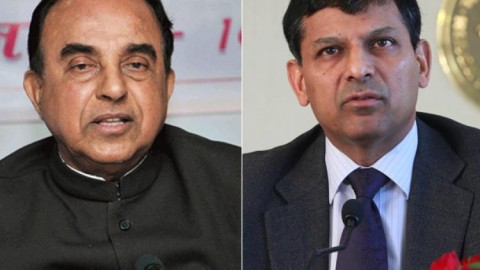In 1972, the so-called ‘East Asian Miracle’ was in the making; Prof. H.Y Myint undertook a study of the growth pattern of these economies on an Asian Development Bank grant. In the report that resulted, he emphasized the centrality of export of primary products in hauling these erstwhile strangers of the ‘Third World’ to the forefront in economic activity. This principally export-lead model of industrialization and growth continued, and though export of primary products was increasingly marginalized by export of manufactured goods and machinery, it remained export nevertheless. When the Chinese opened themselves to the world in 1979, Deng Xiaoping and his successors shaped the Chinese Growth Story to take a similar route. The Giant looked west, and became a manufacturer to the world, flooding the world markets with Made in China products. Napoleon Bonaparte once remarked, “Let China sleep, for when she wakes, she shall shake the world”. And shake the world she did.
 Of all the factors that have played their role in various capacities in the recent stock market rout, it is this export-led growth strategy that is the major one.
Of all the factors that have played their role in various capacities in the recent stock market rout, it is this export-led growth strategy that is the major one.
The issue with export lead models is that they tend to become perennially dependent on policies and developments that are absolutely external to the sphere of control of their governments. While bringing windfall gains so long as the global demand conditions remain robust, these gains could be lost in the most unfortunate manner when global demand slackens.
In the aftermath of the Global Financial Crisis of 2008, demand conditions have remained considerably weak in all the major export markets of the Chinese. With 16% and 17% of total exports being funneled into the US and the EU respectively, for an economy that depends on exports for 30% of its GDP, this must sound serious alarm. Commodity prices have been showing a declining trend ever since the GFC, and this directly impacts Chinese growth, since it is so heavily dependent on exports. With the Chinese responsible for having remained for decades the major engines of international growth, any jitters in China, are bound to impact global markets.
This is a common tendency observed among several economies that tend to depend disproportionately on their exports to prop up their growth. In 1997, East Asian economies hinted towards similar vulnerabilities in the face of declining commodity prices. In contemporary times, the same trend is observed across several non-OPEC petroleum exporting economies, be it Russia or Brazil. With oil prices falling beyond their capabilities to dictate, the inherent structural weaknesses of these economies have become apparent.
It is due to China’s over-dependence on international demand, that such uncertainties become more pronounced in slackening its growth. In order to correct these structural weaknesses, China would have to rebalance from being an investment economy that depends on international demand, to being a consumption economy that rests more on the contours that domestic final demand would take. This structural rebalancing has indeed commenced, and the stock market might not necessarily always react favorably to the policy changes that follow.
Secondly, what holds the Chinese back is their relatively weak institutions. Free markets rest greatly on the government activity in acting as a complement to the market, not an adversary or  statist hindrance. These market complementary measures, among others, include a strong legal system, a corruption-free beaurocracy and a transparent decision making process. With respect to market debacles, it is probably the transparency restraint that has a greater role to play. For instance, the Chinese maintain a closed regulatory order that determines the value of the remninbi by comparing it to a basket of currencies which is confidential. The resultant is that China’s currency maneuvers become subject to debate and suspicion. Similarly, uncertainties with the extent of truth in China’s official representation of its growth rate, also become a risk to investors and traders on the stock market as well as the real economy. If China has to become a responsible economic power, the process would start with smoothening capital mobility and floating the exchange rate-which for all practical purposes is boosting transparency.
statist hindrance. These market complementary measures, among others, include a strong legal system, a corruption-free beaurocracy and a transparent decision making process. With respect to market debacles, it is probably the transparency restraint that has a greater role to play. For instance, the Chinese maintain a closed regulatory order that determines the value of the remninbi by comparing it to a basket of currencies which is confidential. The resultant is that China’s currency maneuvers become subject to debate and suspicion. Similarly, uncertainties with the extent of truth in China’s official representation of its growth rate, also become a risk to investors and traders on the stock market as well as the real economy. If China has to become a responsible economic power, the process would start with smoothening capital mobility and floating the exchange rate-which for all practical purposes is boosting transparency.
So long as the larger picture is concerned, the market collapse is certainly a warning call. The global economy is indeed under duress, and politics seems to be more than ever interfering with sound economic policy, producing what Paul Krugman famously calls ‘second-best economic policies’. The current international economic atmosphere is best defined as a period of immense uncertainty that follows major crisis. Whether the Federal Reserve would raise interest rates becomes more and more, an arena of immense confusion with conflicting opinions within the Fed and extremely volatile markets. The European Union has been stagnating ever since the Debt Crisis of 2011 exposed just how vulnerable the European economy stands. With the Greek debacle, the very structure and purpose of the Union is now being questioned. Correcting faults with the international economy is certainly going to be a mammoth task.
Coming back to China, there is still much reason for optimism. Only around 15% of household wealth is held in equities, so the current equity bust would not hamper current demand and where it stands. Most probably, people may turn to banks to fulfill their financing needs than to financial markets, throwing an upward pressure to interest rates. That the Peoples Bank of China has pulled down interest rates for the fifth turn in the past few days would be reassuring. Major policy instruments such as cuts in cash reserve requirements are still to be exercised. Also, household debt levels in China are favorably low compared to the numbers in the US and England, thus a rebalancing in favour of consumption would work well in China’s interests. Lastly, most of China’s public debt is domestic. This would allow policymakers greater headroom in policy making in such volatile times.
 So long as the Indian economy is concerned, falling commodity prices are bound to help even further in maintaining a greatly reassuring set of macro variables. A contraction in the import bill has already capped Current Account Deficit to roughly under 1.5%, and has restrained deficits under 4%. With a massive foreign exchange reserve that totals up to well over $350 bn, India’s external stability stands assured at least in the short and medium term. A reduction in government expenditures and deficits will translate in lower inflation rates, while any devaluation in the rupee will be offset by low commodity prices and strong foreign exchange reserves. Over the long run, the extent to which Modi’sMake in India strategy will work falls into question with the declining trend in global demand. Learning from China, India won’t want to construct an economy that is an again an export-led model the weaknesses of which have been clear enough. What however, most threatens the economy at the current stage is a Fed rate hike, that can exact major capital outflows, which would greatly harm the economy, but those concerns can wait till the Fed grants greater clarity pertaining to its policy stance.
So long as the Indian economy is concerned, falling commodity prices are bound to help even further in maintaining a greatly reassuring set of macro variables. A contraction in the import bill has already capped Current Account Deficit to roughly under 1.5%, and has restrained deficits under 4%. With a massive foreign exchange reserve that totals up to well over $350 bn, India’s external stability stands assured at least in the short and medium term. A reduction in government expenditures and deficits will translate in lower inflation rates, while any devaluation in the rupee will be offset by low commodity prices and strong foreign exchange reserves. Over the long run, the extent to which Modi’sMake in India strategy will work falls into question with the declining trend in global demand. Learning from China, India won’t want to construct an economy that is an again an export-led model the weaknesses of which have been clear enough. What however, most threatens the economy at the current stage is a Fed rate hike, that can exact major capital outflows, which would greatly harm the economy, but those concerns can wait till the Fed grants greater clarity pertaining to its policy stance.
Across the border, the Chinese, however, have certainly learnt something valuable following the plummeting of the Shanghai Composite Index; what goes up fast comes down faster.
Tags: China india Indo-China








